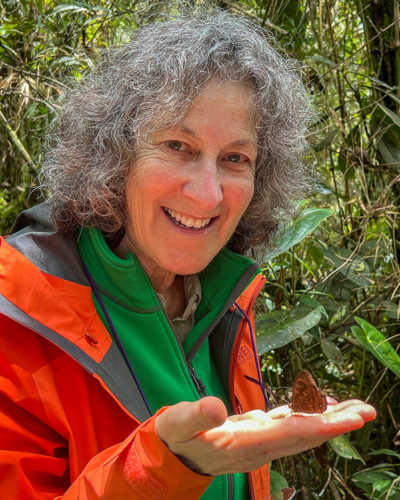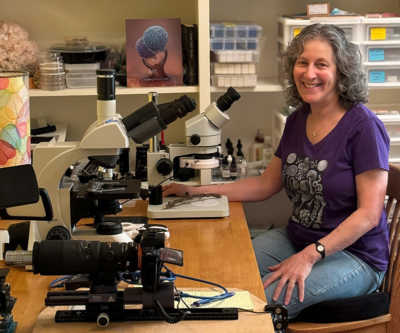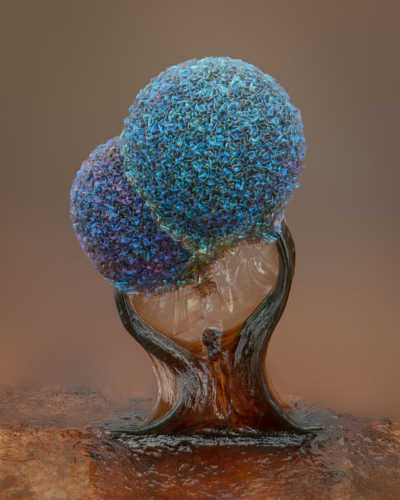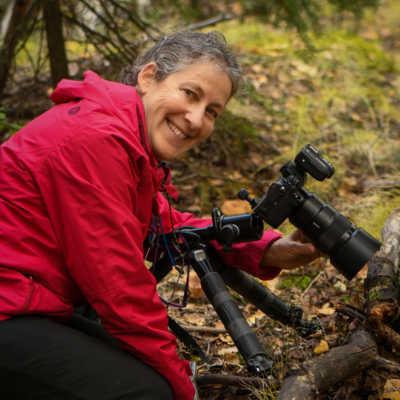Alison Pollack’s passion for photography has always been intertwined with her love of nature. But as a mathematician by training, it wasn’t until after she retired that she was able to transform that passion into a nearly full-time hobby.
Masters of MicroscopyMasters of Microscopy

Alison Pollack’s Journey Capturing the Beauty of Nature’s Smallest Marvels
Welcome to Masters of Microscopy: The People Behind the Lens, where we showcase and celebrate the individuals who are the heart of the Nikon Small World competitions. They are scientists, artists, researchers, educators, and everyday curious individuals who uncover the fascinating microscopic world around us.

Alison Pollack
Her interest in nature photography was sparked while hiking with a friend. Together, they noticed the diverse array of mushrooms that dotted the forest floor during the winter rainy season. Initially skeptical, Pollack soon found herself engrossed in the world of mushrooms and started taking photographs of them.
“When I first started, I was using a basic point-and-shoot camera,” Pollack recalled. “But after my father passed away, I used a small inheritance to finally invest in a real camera. That decision completely transformed my photography.”
“On a hike one day I found in the forest a cluster of what looked like orange jelly beans. I took a picture with my cell phone, did a reverse Google image search, and figured out that it was something called a slime mold. I spent 12 hours straight learning about slime molds online, and the next day I bought a macro lens,” said Pollack. This marked the beginning of her deep dive into the world of macro and extreme macro photography. Driven to study and photograph the exquisite beauty and unique forms of microscopic organisms, she acquired a microscope and an extreme macro lens for her camera. She then ventured into microscopic photography, adapting microscope objectives to fit her camera.

Pollack at her home study table, surrounded by her microscopes and photography gear
Slime molds, formally known as Myxomycetes, quickly became the focal point of Pollack’s work. Affectionately called “Myxos” by those who study them, these extraordinary organisms captivated her with their intricate structures and otherworldly beauty. This newfound focus opened the door to a fascinating world of microscopic photography, where Pollack’s creativity and scientific curiosity merged seamlessly.
Pollack’s journey has been one of trial and error, and of continuous exploration and discovery – and she encourages others to take the same approach. “Start slowly, practice a lot, and take your time,” she advised. “Watch videos, study other people’s work, and see what you like and don’t like. Critique your own photos. It takes a huge amount of time and effort to do what I do, so you really need to have an inner passion for it.”
For Pollack, that passion is a combination of her love for science, nature, and photography – a trifecta that has fueled her success in capturing the hidden beauty of the natural world.
Pollack's artistic vision has since earned her recognition within the science photography community, particularly on Instagram, where she was the first to post artistic images of slime molds. Her unique approach to capturing these microscopic wonders has inspired a new wave of photographers who now share her passion.

Pollack's fifth place image from the 2022 Photomicrography Competition
Pollack’s work is not without its challenges. From locating her subjects in the wild to capturing their intricate details in a controlled studio environment, each step requires precision and patience. “The first challenge is finding them,” Pollack explained. “Once mature, slime molds can remain in that state indefinitely but transporting them home without damaging them is tricky. And then there’s the challenge of photographing them – they’re incredibly tiny, so depth of field is almost non-existent when using microscope objectives.”
To overcome these challenges, Pollack employs advanced techniques such as focus stacking, where hundreds of individual images are combined to create a single, sharply focused photograph. Pollack credits digital photography with revolutionizing her work, as “it allows us to do focus stacking, which is essential for extreme macro photography,” she explained. Her focus stacks can range from 50 to 700 individual photos, depending on the magnification.
Lighting is another critical aspect of her work. “Slime molds can be very iridescent and reflective, so regular lighting doesn’t work. I spent 40 hours perfecting the lighting in order to capture one of my favorite images,” she said about the Lamproderma that earned fifth place in the 2022 Nikon Small World competition.
Over the years, Pollack has built a network of fellow enthusiasts and experts in the field. “I have friends who are world experts in slime molds, and I often send them photos to seek their help with identification,” she said. This collaborative spirit has been a significant part of her journey, allowing her to deepen her understanding of the organisms she photographs and encouraging her to branch out in the scope and scale of her own work.

Pollack in the field
Looking ahead, Pollack is excited about new projects that will allow her to develop an even greater familiarity and a deeper understanding of the subjects of her micrography. “I’m finally doing microscopy not just for photos, but for species identification, which will get me more into the science of slime molds,” she shared.
Pollack believes competitions like Nikon Small World are crucial because they showcase the beauty of the microscopic world to a broader audience and introduce the public to subjects they might otherwise never see. “I hope my images inspire people, especially kids and students, to explore STEM fields and develop an appreciation for science,” she said.
Since first entering the Nikon Small World competition in 2021, eight of Pollack’s images have placed, including four in the top 20 — a testament to her skill and dedication. “When I placed 20th the first time I entered the competition, I was blown away. It’s such an honor and a huge prestige,” she said. As the competition grows, Pollack continues to challenge herself to find new subjects and techniques that will set her work apart.
You can see more of Pollack’s work on her Instagram and Facebook.
To stay up to date with the "Masters of Microscopy" series and receive your daily dose of Nikon Small World, follow us on Instagram, X, and Facebook. Be sure to follow Nikon Instruments for the latest updates on equipment and technology.